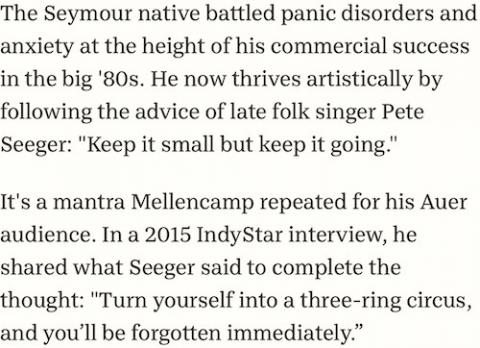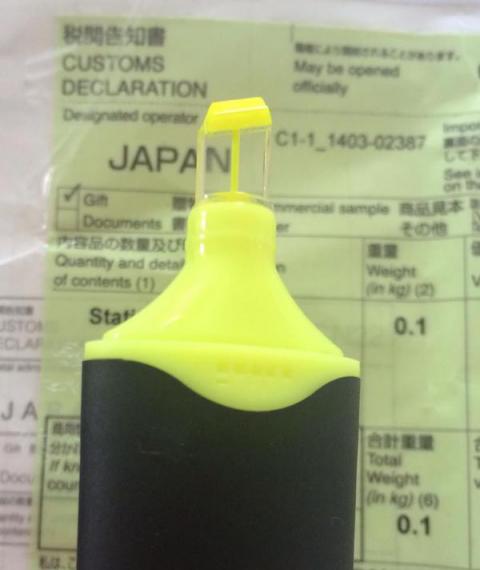March 24, 2014: Woo-hoo, I got my cool see-thru Japanese highlighter today. It's like Christmas for a highlighter nerd.
Scala, Java, Unix, MacOS tutorials (page 111)
“The harder you work, the harder it is to surrender.”
~ Vince Lombardi
March 24, 2013: After yesterday's snowstorm, about 5" locally, I woke up to completely white mountains. Twenty minutes later they looked like the top photo, and twenty minutes after that they looked like the bottom photo. Between the thin air (my apartment is at 5,800') and the sun, the snow disappears fast here, either by melting or ablation.
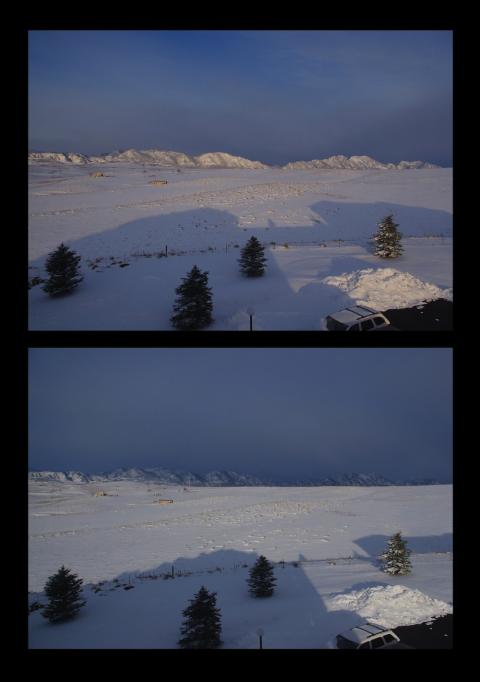
“So you’re a glass half-empty kind of guy?”
“Depends what’s in the glass.”
Sorry I haven’t written much this week, I’ve been working on designs for the cover of a new book. But I can share one thing, my favorite song of the week, We Said Hello, Goodbye (Don’t Look Back), by Phil Collins. Some of the lyrics:
Well it really don’t matter much where you are
’cause home is in your heart
It’s a feeling that you wake with one day
Some people keep running all of their life
And still find they haven’t gone too far
They don’t see it's the feeling inside
The feeling inside.
contributors.scala-lang.org has become my favorite website this past week. It’s very interesting to read through the debates about new language features for Scala 3 (Dotty). For instance, in the Make concrete classes final by default discussion I think everyone agrees they wish they had gone that way with Scala 2, but it would cause too many problems if they tried to make this a new standard in Scala 3. The discussion — in addition to reading Effective Java — makes me wish I had used final before all of my classes.
In another discussion titled, Why does Scala need its own build tool (SBT), someone makes a claim that Martin Odersky and his team created SBT as a build tool solution, and Mr. Odersky replies, “Definitely not my answer. I was always very skeptical of SBT’s approach and remain so.”
I had read that Bloop was faster than Scala compiler tools like scalac and fsc, so I wondered if it was faster than SBT, and if so, how much faster. So I downloaded Eric Torreborre’s specs2 source code, which has 880 source code files, and compiled the entire project with both SBT and Bloop.
SBT performance
To test SBT’s speed, I ran all the commands from inside the SBT command prompt, which I usually do anyway to avoid the SBT/JVM startup lag time. I also ran clean and compile several times before recording SBT’s speed, because I thought that would be a better reflection of real-world usage and performance. I ran the tests four times, and the average time with SBT was 49 seconds, and that was very consistent, always coming in between 48 and 50 seconds.
Bloop performance
I saw this “SQL joins as Venn diagrams” image on this Twitter page. To give attribution to the original author, it appears to have been created by C.L. Moffatt and documented in this Visual Representation of SQL Joins article. However, this article makes the case that Venn diagrams are not an accurate description of SQL joins.
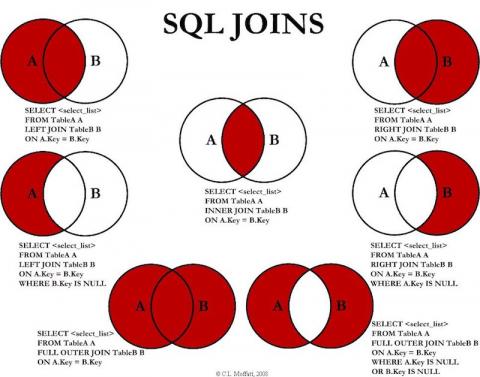
A funny thing about mast cell disease is when a 60+ year old doctor who is considered one of the best in his profession says to you, “I’ve only seen that once before in my life.” With MCAS, you get used to statements like that.
(This happened in 2016, but I was reminded of it again today.)
“The sooner you start to code, the longer the program will take.”
~ Roy Carlson (which I saw in this tweet)
In general, I’m a fan of that quote, meaning that the harder the problem is, the more I like to find a whiteboard or some index cards to work through the problem that way before I start coding.
A long time ago — around 2009 — I initially shared some free Java and OOP training material. If you’re interested, you can find it here:
The minute I heard my first love story
I started looking for you, not knowing how blind that was.
Lovers don't finally meet somewhere;
They are in each other all along.
~ Rumi
Lesley Stahl, a 60 Minutes news correspondent, once had this interaction with Donald Trump:
“I said, you know that it’s getting tired, why are you doing this (discrediting the media) — you’re doing it over and over and it’s boring,” Stahl said. “He said you know why I do it? I do it to discredit you all and demean you all, so when you write negative stories about me no one will believe you.”
I read that in this Washington Post story, and it’s also available from many other news sources.
I recently went through a period where my blood pressure (BP) went up to 150/100 and stayed there. My normal BP is ~115/70, so I monitored it for a few days, and when it stayed there I made an appointment with my primary care physician (PCP). I explained everything to her, how I eat almost exclusively organic foods that I prepare at home, and I exercise harder than I have since 2011. I told her that I started feeling a little sick about two weeks ago, and that I was now feeling worse. I suggested that I probably had an infection, because that had been a recurring problem before we knew about the mast cell disease, and I had also just had a surgery in December. To me there was no logical reason that my BP should be that high unless I’m having an infection or some sort of heart issue.
Nonetheless, without doing any tests, her recommendation was that I should increase my Lisinopril dosage from 20mg to 40mg — which is the max you can take, and also has potentially severe side effects. My response was along the lines of, “Okay, whatev,” and after I left her office I made an appointment to see a specialist. I felt like she was just medicating the effect, and had little interest in understanding the cause.
I found this Warren Buffett quote in this Inc. Magazine article back in 2018:
“If you could invest in only one of your fellow classmates, who would you choose? If you could buy, say, 10% of the future earnings of just one classmate, who would you choose? What would you look for?”
The idea is that you won’t just necessarily look at raw IQ, you’ll look at other personality attributes, such as drive, ambition, and hopefully other attributes like honesty and integrity.
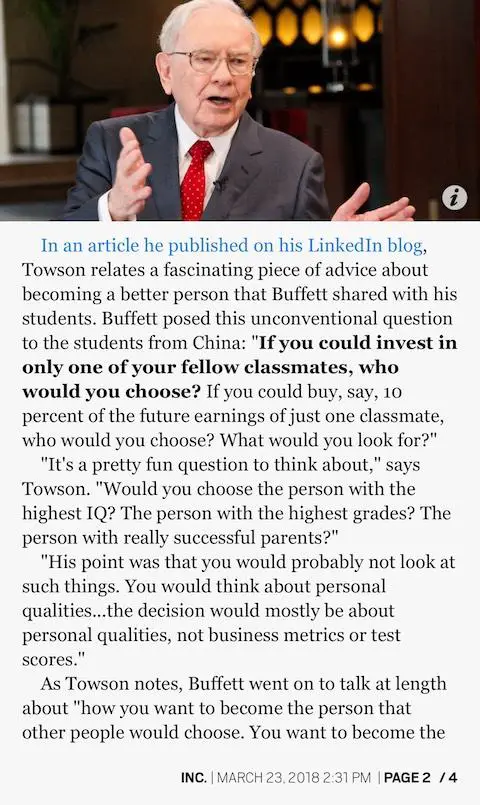
My college admission story is that my dad said, “Son, go to college, I’ll figure out a way to pay for it.” Then after my freshman year he said, “Sorry, it turns out I can’t really afford to pay for it. Go get yourself some more grants and loans, and keep up the good work. May the Force be with you.”
![]()
In my spare time back in 2011 I created a Java version of the old Unix/X-Windows “Xeyes” application. If you ever used Xeyes, you know it as a set of eyes that are displayed on-screen, and follow the mouse cursor as you move it around.
Now in 2019 I just brought it back to life, and here’s a 56-second video that shows how it works:
If for some reason that video doesn’t work, you can see it at this YouTube link.
The app currently only works on MacOS, but it can probably be ported to Linux and Windows systems by anyone motivated. The source code is pretty rough — I wrote it in less than two days back in 2011 — but if you want to build it or improve it, you can find the code here:
As you can see there, the build works with SBT/Assembly and the app-packaging process uses javapackager.
Feel free to fork it, clean it up, improve it, etc.
The people at Triplequote looked at the performance of Scala compilers on different Amazon EC2 instance types in an effort to answer the question, “What is the (cloud) cost per build?”
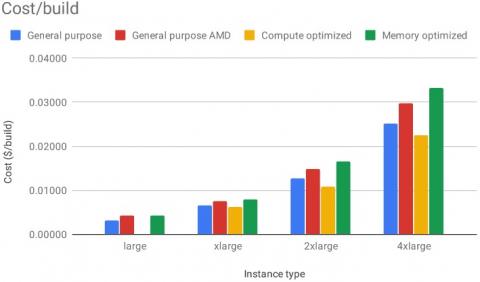
“Keep it small, but keep it going.”
~ a good quote from Pete Seeger, via John Mellencamp (from the IndyStar)
